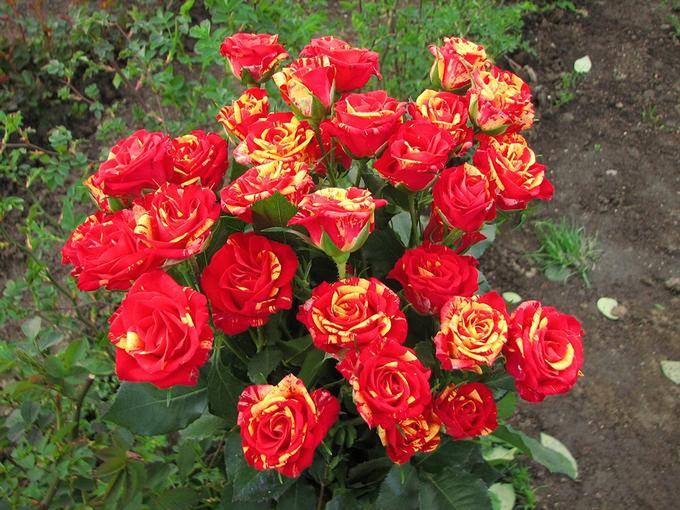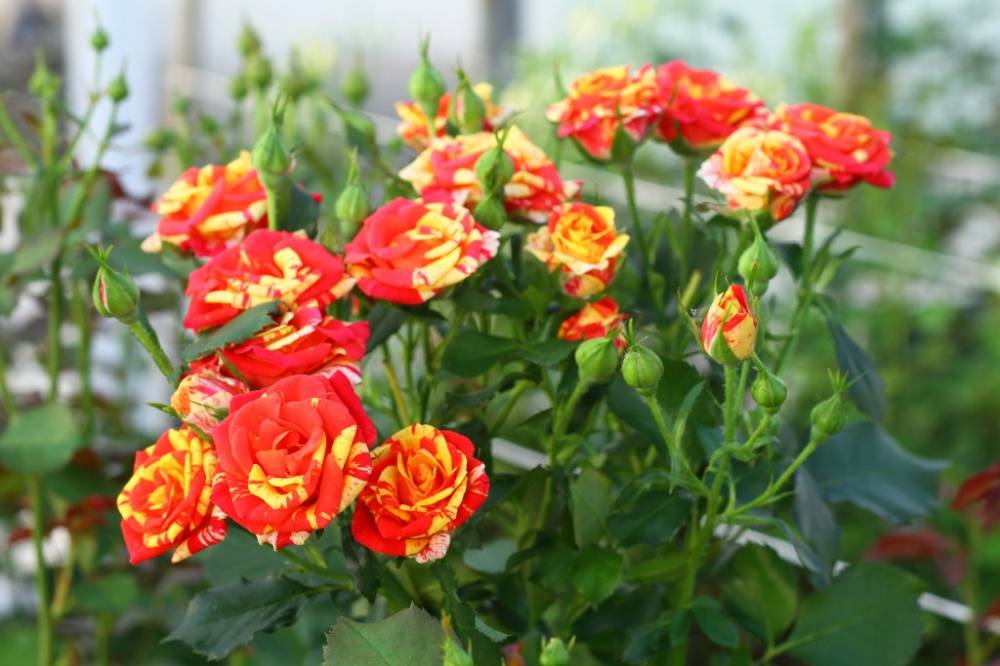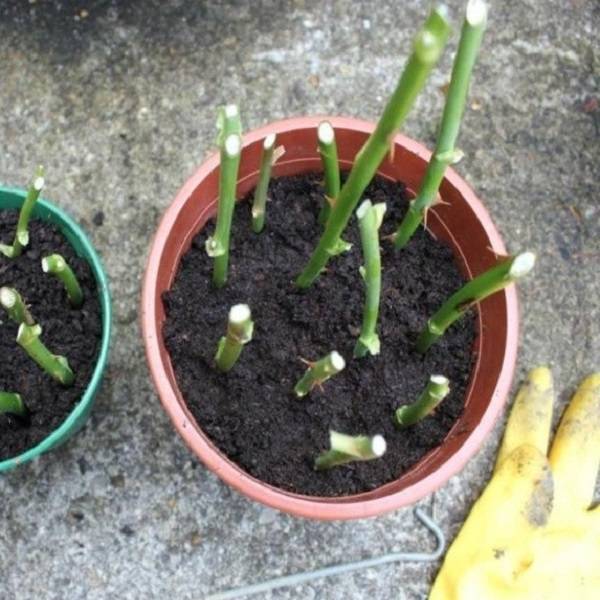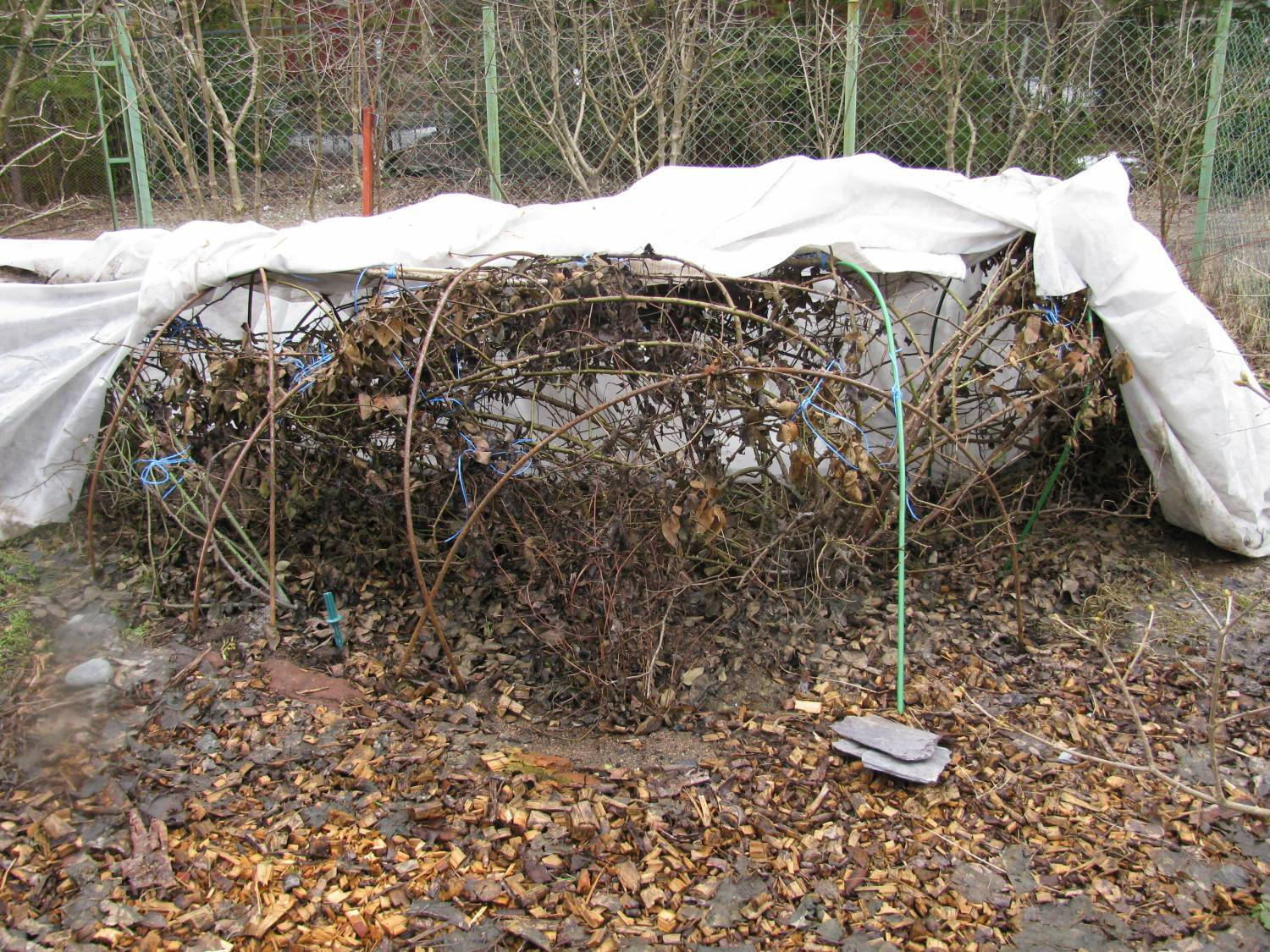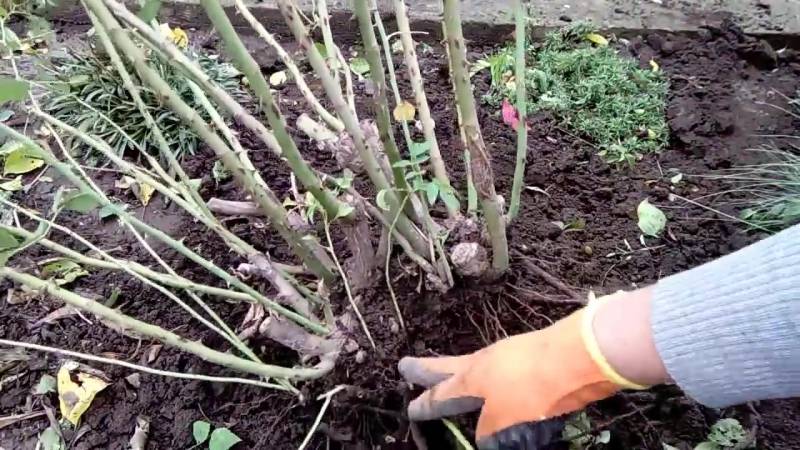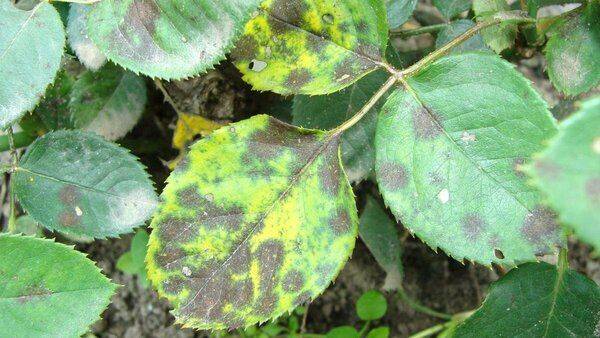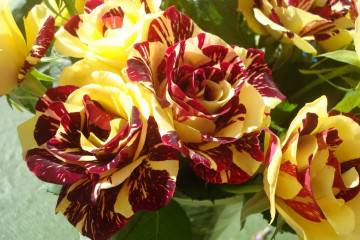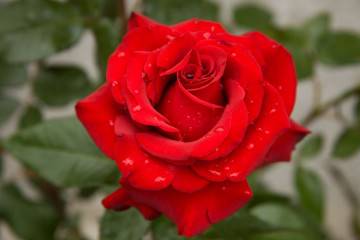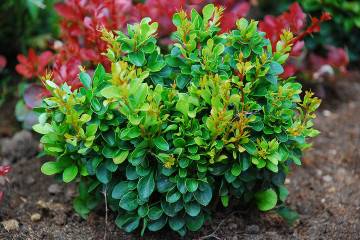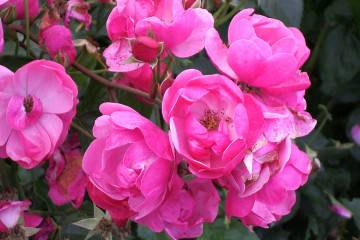Rose Fire flash (Fire flash) - variety description
Content:
Fire flash is a rose variety that many growers want to get into their garden. It is a compact shrub that can be used as a garden decoration, as well as for creating floristic compositions. The plant is unpretentious in care, and therefore even a novice florist can cope with it.
Rose Fire flash (Fire flash) - what is this variety
More recently, a new group of roses has been isolated from the floribunda class - a spray. It is distinguished by abundant flowering, up to 15 buds can bloom on one stem at the same time. The flowers themselves are quite small, reaching a diameter of 6-7 cm. One of the most notable representatives of this group is the Fire Flush rose, which in different sources can also be found under the names Flash Eye and May Fire.
Brief description and characteristics
The name of the flower translates as "flash of fire", which in itself is an excellent description of the external characteristics of the flower. The buds are goblet-shaped, medium double, two-colored: rich red-orange at the edges, and bright yellow in the middle.
Each inflorescence can contain up to 10 flowers. The bush is quite compact, its width and height do not exceed half a meter. The variety is invulnerable to a large number of pests and diseases. Fire flush is unpretentious, the planting and care scheme is the same as for other roses.
Advantages and disadvantages of the variety
Rose Fire flash has a number of advantages over other varieties of this type of flowers:
- original color of buds (Flushing rose and some other options can also boast of it);
- long flowering throughout the summer;
- resistance to most diseases;
- a large number of flowers on one shoot.
It is almost impossible to find cons of a rose. It is easy to care for and has many uses.
Use in landscape design
The Fire Flush shrub rose variety was bred by Dutch breeders working for the Interplant company, which creates flowers of this species for cutting. Most often, florists use the plant to create wedding bouquets.
The main use case for Flash Fire is in landscape design. The flower fits perfectly into rose gardens, can be used as an accent plant in a flower garden, as well as for decorating borders.
Growing a flower
Cultivation of culture can be done not only by professional gardeners, but also by beginners, because if you follow all the recommendations when planting and caring for a plant, it will delight the eye for a long time.
It is recommended to use seedlings purchased in mini-containers or a bag with nutritious soil for planting. If planting is carried out in the fall, then it is better to use planting material with a well-developed root system; in the spring, those sold in containers are better suited.
What time is the boarding
Planting is recommended either in early spring, when the ground has already warmed up, or in the fall around October, depending on weather conditions. It is necessary to do this before the cold begins, so that the plant has time to take root in the ground before the onset of frost.
Seat selection
The location should be chosen depending on the color of the buds. Roses of the spray group love sunny areas, however, dark buds on them can fade, and therefore become light. For Flash Fire, you should choose a sunny area protected from gusty winds. Groundwater should run at a depth of 1 m.
How to prepare the soil and flower for planting
Soil preparation lasts about 3 months, and therefore it is worth starting it in advance in order to improve the quality of the soil for planting. Key recommendations:
- clear the area of weeds;
- dig up the soil, make a hole half a meter deep. The top soil should be mixed with fertilizers and filled to the bottom, then the fertilized bottom layer should go.
These actions will help remove excess moisture from the ground, as well as saturate it with oxygen, which will help the root system develop faster. It is necessary to prepare the seedlings properly so that the plant takes root on the site and grows strong and healthy.
The shoots should have at least 3 buds and about 5 eyes. It is worth pruning the lateral roots, as well as cutting off the damaged ones. Places of cuts should be treated with charcoal for disinfection. After that, it is worth placing the plant in a sodium humate solution overnight.
Planting procedure step by step
When landing, it is worth following a certain order of actions:
- Dig a hole half a meter deep and wide.
- Put drainage on the bottom, which can be small pebbles and sand.
- Add a small amount of compost and nutrients.
- Spread the roots on the formed hill, sprinkle with earth.
At the end of the procedure, it is worth pouring warm water on the rose, about 8 liters per bush.
Plant care
Earlier it was noted that the Flash Fire rose is distinguished by unpretentious care. So it can be argued when comparing it with other varieties of roses. However, all flowers in the spray group imply the same care.
Watering rules and humidity
Watering should be carried out at the root so that drops of water do not fall on the leaves. It is necessary to carry out the procedure after the soil dries out a little. One bush can take about 8 liters of well-settled, not cold water. So that a crust does not appear on the soil, it is recommended to loosen it after watering.
Top dressing and soil quality
The most suitable type of soil for planting a rose spray is black soil, but it will grow in loamy soil as well. The second option is often recommended to be fed so that the substrate is nutritious, and its acidity is in the region of 6-6.5 pH. It is especially important to apply fertilizers during the period of bud formation and flowering. At this time, nitrogenous fertilizing is most preferred; in the fall, you can begin to make phosphorus-potassium. You can use not only purchased products, but also made by yourself.
Pruning and replanting
Pruning is an important stage in the life of a rose of this variety, despite the compactness of the bush. It is produced in spring, summer and autumn, but in each period it requires certain care, which should be distinguished. In the fall, it is worth removing the branches affected by the fungus.In the summer, it is worth removing faded buds so that flowering continues.
The main pruning is done in the spring. In this case, you need to carefully examine the bush in order to understand which branches could not survive the winter, they should be removed without hesitation. Then it is worth determining which shoots will bloom in the current year. Depending on your own plans, you should choose one of the trimming options:
- strong pruning is done at the level of 3-4 buds from the base of the shoots. This allows you to collect cuttings for propagation, as well as update the old weakened bush;
- medium pruning is done at the level of 5-6 buds from the base of the shoots. The need is due to the stimulation of flowering, and can also be made to provide a decorative look;
- weak pruning is a weak shortening of the shoots. It is often used in the summer to remove inflorescences that have had time to bloom.
Features of wintering a flower
Despite the fact that the Fire Flush variety is frost-resistant, it needs to be covered in Central Russia. You should not rush, since the roses will be able to withstand the air temperature around -5-7 ° C, this will also help them prepare for wintering. Before creating a shelter, it is worth spilling a bush with earth; it is not recommended to use peat, sand or sawdust for these purposes.
When frosts are established, you can cover with spruce branches. It should be laid between the bushes, as well as on top of them. It is necessary to install a support made of wire, which will make up the frame. It subsequently needs to be covered with plastic wrap over the insulation.
Blooming rose
Fire flush blooms from late May to early September. During this period, a large number of buds are observed, which bloom at the same time.
A period of activity and rest
The dormant period of the rose is winter time, so it is not worthwhile to make additional fertilizing in the fall that stimulates plant growth and the formation of buds, as this can ruin the flower. In the warm season, the variety has a period of activity.
Care during and after flowering
Before and after flowering, it is required to constantly apply fertilizers to the soil, which either stimulate the formation of buds, or help maintain the vitality of the plant. It is necessary to regularly mulch the substrate in which the rose grows so that weeds do not appear. In dry weather, it is worth watering more often. One must not forget about timely pruning, which stimulates the growth of the plant.
What to do if it does not bloom
The plant may stop blooming due to the wrong choice of planting site, over-pruning, improper care, the presence of diseases, or simply because the flower is aging. First of all, it is worth reviewing the care used. If this does not help, then you need to remove excess shoots, inoculate and fertilize the plant with potassium and trace elements.
Flower propagation
Reproduction can be carried out in any available way, which seems the most convenient in a particular situation:
- seeds;
- cuttings;
- in small deeds.
It should be borne in mind that the dilution result can be quite unpredictable. Roses reproduce by seeds poorly, so you can't even talk about whether the material will germinate or not. Also, the daughter plant can be very different from the mother.
The easiest way is to divide the root. However, in this case, the parent bush is under attack, since the division of the rhizome is a great stress for it. After planting, flowering may be more scarce and growth will stall for a while.
The division of the bush is done with a sharp shovel, which must be disinfected so as not to bring the disease. With one sharp blow, you need to divide the rhizome into 2 divisions, treat the cuts with charcoal or activated carbon, then plant them.
The most correct breeding method is cuttings. In this case, the parent bush will be intact, and a plant with the same characteristics that were needed will grow from the cuttings. Breeding material should be stored during strong flower pruning.
It is recommended to plant in the spring, if during this period the planting material was only taken, by the end of summer the cuttings will take root. In the fall, you should plant them in a pot and leave them at home, and transplant them into open ground next spring.
The stalk needs to be cut at an angle of 45 °. Its length should be about 15 cm, and there are at least 2 buds on a branch. The cuttings are placed in moist soil or a rooting stimulant. After the roots appear, the twig can be planted in regular soil.
Diseases, pests and ways to control them
The following pests are most often found on roses:
- aphids - small colonial insects that suck the sap of plants;
- leafhoppers leave larvae on the leaves, which feed on the juice of roses;
- spider mite - a parasite that damages the lower surface of the leaves, feeding on the sap of the flower;
- leafworm is a caterpillar that gnaws at buds and young shoots.
Of the diseases, powdery mildew and black spot can be found in most cases. In the second case, it is required to destroy the bushes so that the spores do not spread to neighboring ones. For powdery mildew, it is recommended to spray the flowers with a solution of soda ash. Insecticides are used to control insects.
The rose of this variety has many advantages over other representatives of the species. At the same time, it is difficult to notice the disadvantages, since the plant is distinguished by unpretentious care and an attractive appearance.
